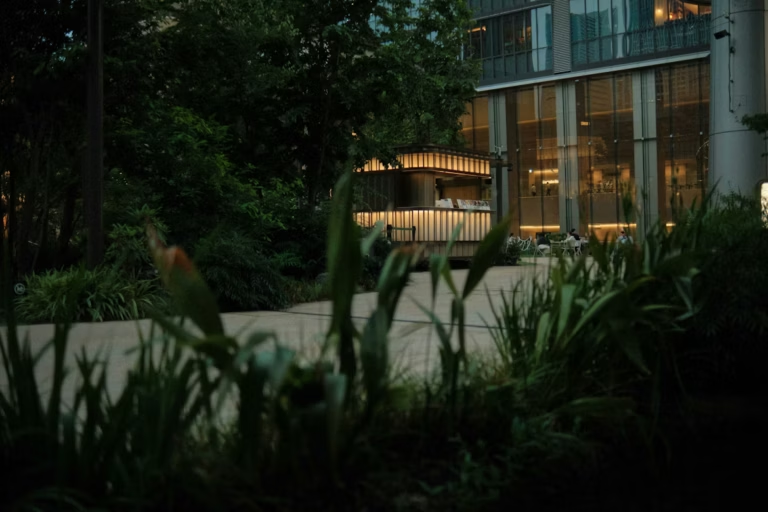Every site has unique security challenges — from unauthorised access and theft to vandalism, workplace violence, or operational disruption. Without a structured understanding of these risks, even the best security systems can fall short.
A site security risk assessment gives you that understanding. It identifies where your vulnerabilities lie, evaluates how threats could impact your people and property, and outlines practical measures to strengthen protection.
Whether you manage a commercial building, council facility, or industrial operation in Perth, an independent assessment ensures your security investments are evidence-based, compliant, and cost-effective.
What Is a Site Security Risk Assessment?
A site security risk assessment is a structured evaluation of potential threats and vulnerabilities across a specific location — such as a building, facility, or campus.
The process examines how well your current security controls (physical, procedural, and technological) protect against real-world risks. It’s a proactive approach that allows you to address weaknesses before they lead to incidents.
Assessments are typically guided by ISO 31000:2018 (Risk Management – Guidelines) and relevant Australian Standards, including:
- AS/NZS 62676.4:2020 – Video Surveillance Systems
- AS 2201.2:2022 – Monitoring Centres
- ISO 22341:2021 – Crime Prevention Through Environmental Design (CPTED)
These frameworks ensure your assessment is not only practical but also defensible in the event of audit, insurance review, or legal scrutiny.
Why Every Organisation Needs a Site Security Risk Assessment
Security risks vary widely depending on your site’s purpose, layout, and surrounding environment. Common drivers for commissioning a site security risk assessment include:
- Compliance and insurance requirements – Demonstrating due diligence under health, safety, or regulatory frameworks.
- Tender or project development – New builds or upgrades often require risk documentation for approval.
- Incident response – Following a theft, intrusion, or safety event, assessments help identify root causes.
- Operational review – Ensuring security measures keep pace with business growth, public access, or changing risk profiles.
A properly conducted assessment gives you an objective baseline of your current controls, gaps, and improvement priorities.
What a Site Security Risk Assessment Covers
A comprehensive assessment explores several layers of protection.
Perimeter and Access Control
Examines how people, vehicles, and deliveries enter or exit the site. Includes fencing, gates, boom gates, and access card systems. Weak or poorly managed perimeters are a frequent source of breaches.
CCTV and Surveillance Systems
Reviews camera placement, coverage, image quality, storage retention, and system health. The goal is to ensure visibility of critical zones, entry points, and after-hours areas.
Lighting and Visibility
Assesses illumination levels and uniformity in accordance with AS/NZS 1158.3.1:2020 to reduce concealment and improve safety for pedestrians and staff.
Alarms and Monitoring
Evaluates alarm configurations, monitoring centre response times, and integration between intruder, duress, and fire systems.
Security Procedures and Staff Practices
Looks at induction, patrol routines, incident reporting, and escalation procedures — ensuring that human behaviour supports, not undermines, technology.
Contractor and Visitor Management
Analyses how external parties access the site, including identification checks, escort requirements, and after-hours controls.
Emergency Preparedness
Reviews how incidents are managed and whether plans align with AS 3745:2010 – Planning for Emergencies in Facilities.
Crime and Contextual Factors
Incorporates local crime data, environmental conditions, and community context to understand external influences.
The Step-by-Step Process
A professional site security risk assessment follows a structured, transparent process that ensures findings are accurate, defensible, and actionable. Each stage builds on the last to provide a clear picture of your organisation’s security posture.
Establish Context
The first step is to define the assessment scope, critical assets, and key stakeholders. This sets the boundaries for what will be reviewed and identifies the organisation’s risk tolerance and operational priorities.
Identify Threats
Potential threats are identified — both external and internal. These may include theft, vandalism, unauthorised access, sabotage, workplace aggression, or environmental risks. Understanding these helps determine where your site is most exposed.
Identify Vulnerabilities
This stage examines your physical and procedural weaknesses. It includes assessing access control points, CCTV coverage, alarm response, lighting, and how staff and contractors interact with security systems.
Assess Likelihood and Consequence
Each risk is evaluated using an ISO 31000-aligned matrix to measure how likely it is to occur and what the impact would be if it did. This ensures your highest-risk areas receive priority attention.
Develop Treatment Plan
Based on the assessment findings, practical and proportionate treatments are recommended. These may include improving lighting or CCTV placement, updating security policies, introducing new procedures, or providing staff training.
Implement Controls
Once agreed, controls are implemented and integrated with daily operations. Smartsec Security Solutions supports clients through this stage to ensure measures are effective without disrupting core business functions.
Monitor and Review
Risk management is maintained through ongoing monitoring, scheduled reviews, and continual improvement. This ensures that security measures remain effective as threats, technology, and operations evolve.
The Benefits of Conducting a Site Security Risk Assessment
Informed Decision-Making
Invest in what works — not in guesswork. You’ll know exactly where vulnerabilities exist and which improvements deliver the greatest impact.
Compliance and Governance
A documented, standards-based assessment demonstrates due diligence under risk and safety legislation — often satisfying insurer and audit requirements.
Cost Efficiency
By prioritising critical risks, you avoid over-spending on unnecessary systems or reactive upgrades.
Enhanced Safety and Reputation
Safer facilities build trust among employees, visitors, and the community, improving both perception and performance.
Foundation for Continuous Improvement
Security is not static. Regular reviews ensure your controls evolve with new threats, technologies, and operational changes.
When Should You Schedule a Site Assessment?
Smart organisations treat site assessments as part of their ongoing governance cycle rather than a one-off task.
Common triggers include:
- Major facility or infrastructure upgrades
- New tenancies or building acquisitions
- Policy or regulatory changes
- Increases in crime or antisocial behaviour nearby
- Contract renewal for security services
Conducting reviews annually, or following significant change, ensures your controls remain effective and relevant.
How Smartsec Security Solutions Helps
At Smartsec Security Solutions, we specialise in delivering independent site security risk assessments for organisations across Perth and Western Australia.
We don’t sell or install equipment — our focus is on unbiased, evidence-based advice that helps you make confident, defensible security decisions.
Our Approach Includes
- Stakeholder Consultation: Understanding your operational context, constraints, and risk tolerance.
- On-Site Evaluation: Physical inspection of boundaries, buildings, and security systems to identify vulnerabilities.
- Threat and Vulnerability Analysis: Combining environmental observations with crime data and operational patterns.
- Risk Prioritisation: Applying ISO 31000 methodology to rank risks by likelihood and consequence.
- Actionable Recommendations: Delivering clear, prioritised solutions — from procedural improvements to technology upgrades.
We provide easy-to-read reports designed for executives, property managers, or local government stakeholders. Each includes short-, medium-, and long-term recommendations, ensuring you can act immediately and plan sustainably.
Who We Work With
Smartsec conducts site security risk assessments for:
- Local governments and councils – including parks, libraries, community centres, and works depots.
- Education – identifying risks to students, staff, and assets across multiple campuses.
- Commercial and retail property managers – improving safety, compliance, and tenant confidence.
- Industrial and logistics facilities – protecting perimeters, loading docks, and restricted areas.
- Aged care and health providers – ensuring staff safety and controlled public access.
Our local knowledge of Perth’s regulatory environment and crime patterns helps ensure every assessment is relevant and practical.
Why Choose Smartsec Security Solutions?
- Independent Expertise: No product bias — just professional, risk-based advice.
- Local Focus: Based in Perth, with deep understanding of Western Australian laws and standards.
- Proven Experience: Over 17 years in security management and consulting.
- Compliance Assurance: Assessments aligned with ISO 31000 and applicable Australian Standards.
- Clarity and Communication: Reports and recommendations written in plain language for easy implementation.
Final Thoughts
A site security risk assessment isn’t just a formality — it’s a proactive investment in safety, compliance, and operational resilience.
By identifying threats, exposing vulnerabilities, and applying structured risk management, your organisation can prevent incidents before they happen and ensure every dollar spent on security delivers measurable results.
If you want to better understand your site’s security posture or benchmark your current controls, contact Smartsec Security Solutions for an independent assessment. We’ll help you uncover hidden risks and develop practical, defensible strategies to protect what matters most.



